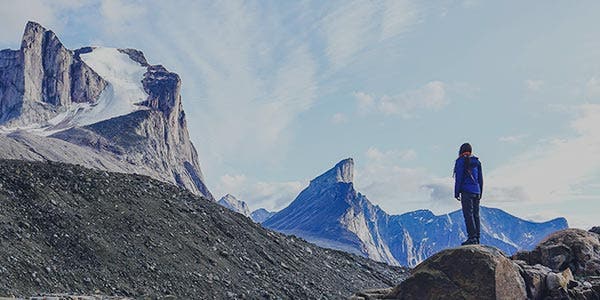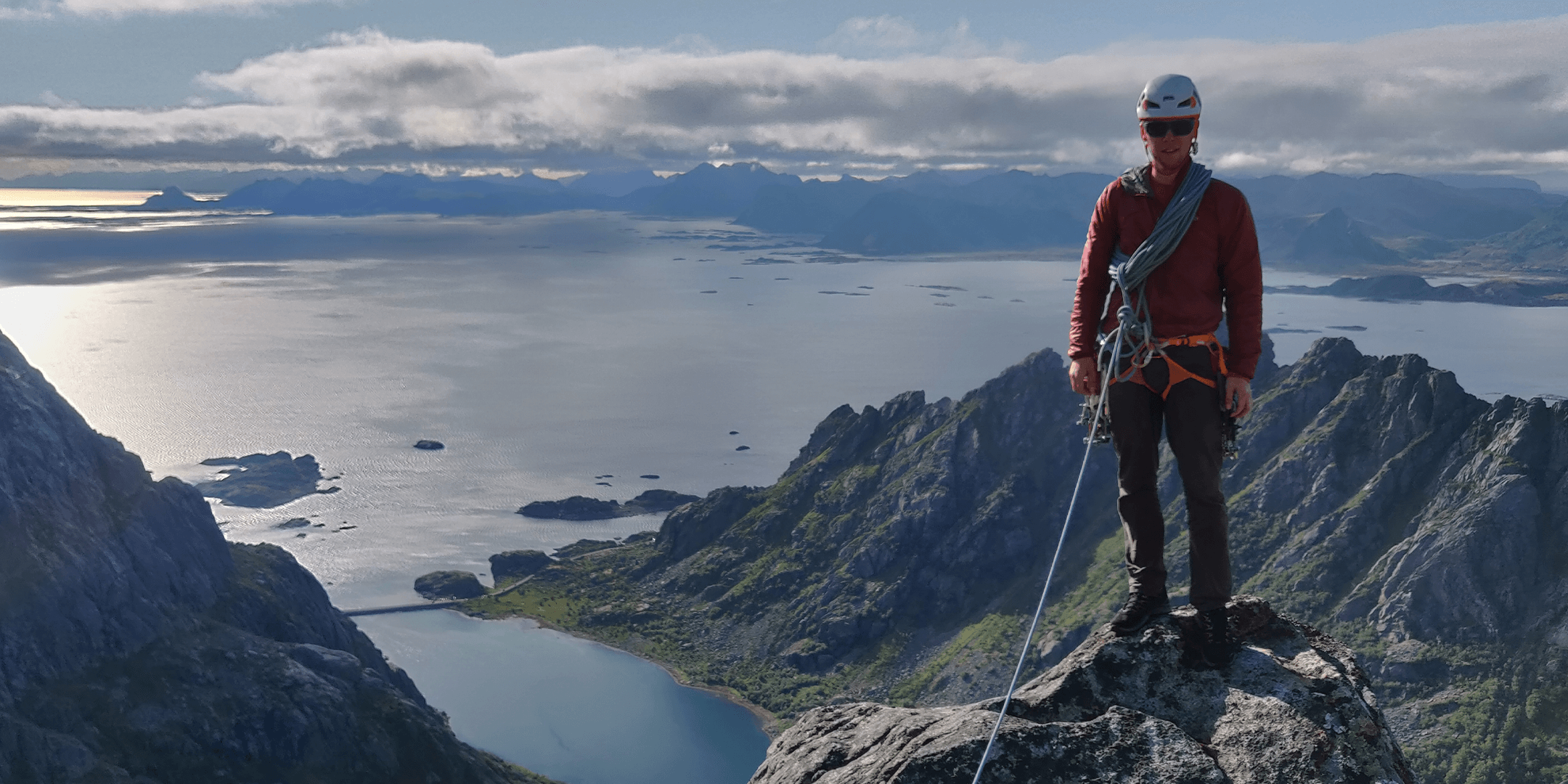
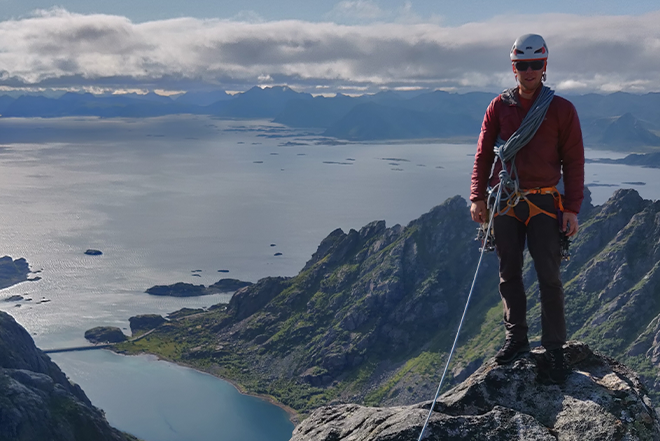
A gust of northern wind hit us once again. I had never felt so cold on a summer’s day in August, but here in the western shore of the Lofoten islands everything was possible. Gusts came from North Pole, and they didn't care about us.
I was wearing everything I could. A down jacket, long johns, winter climbing gloves and a beanie. But my friend, Misha, didn't have that much. He was keen to keep up the pace.
It was wild. Waves were raging below our feet, and eagles were flying above our heads. Cell phone service was a dream. We were attempting the first ascent of the west face of Storskiva (848m), from the ground up, without having seen the face in advance. Well, that’s not totally true. We had one old picture taken from far out at sea, and a blurry satellite image.
We had climbed six pitches and the nature of the line was finally revealing itself. The cracks were full of grass, and I was frantically digging with my nut tool to find a place for a cam. My mouth was full of dirt and my mind was tired, but the main question I had was, “should I chalk up when pinching a grass tufa?”
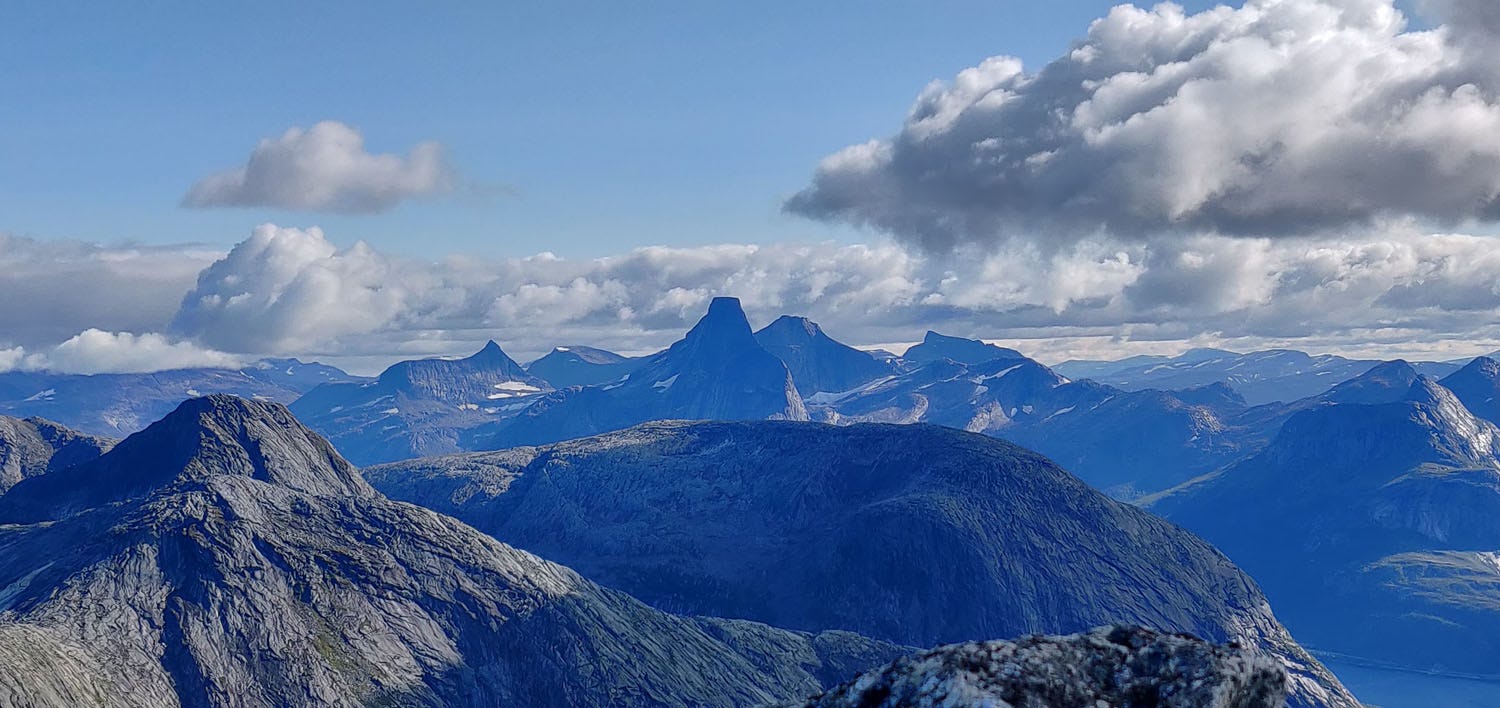

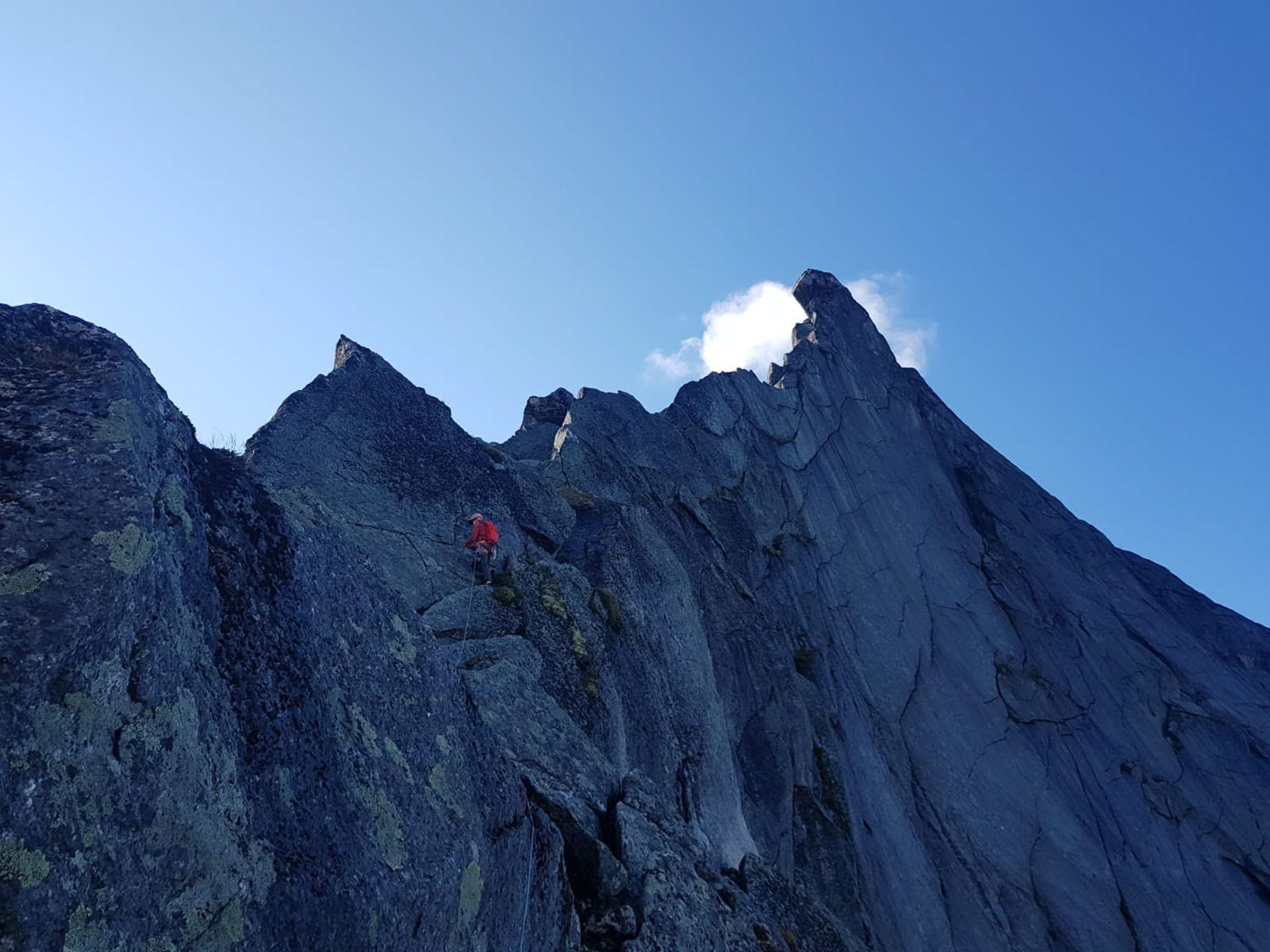

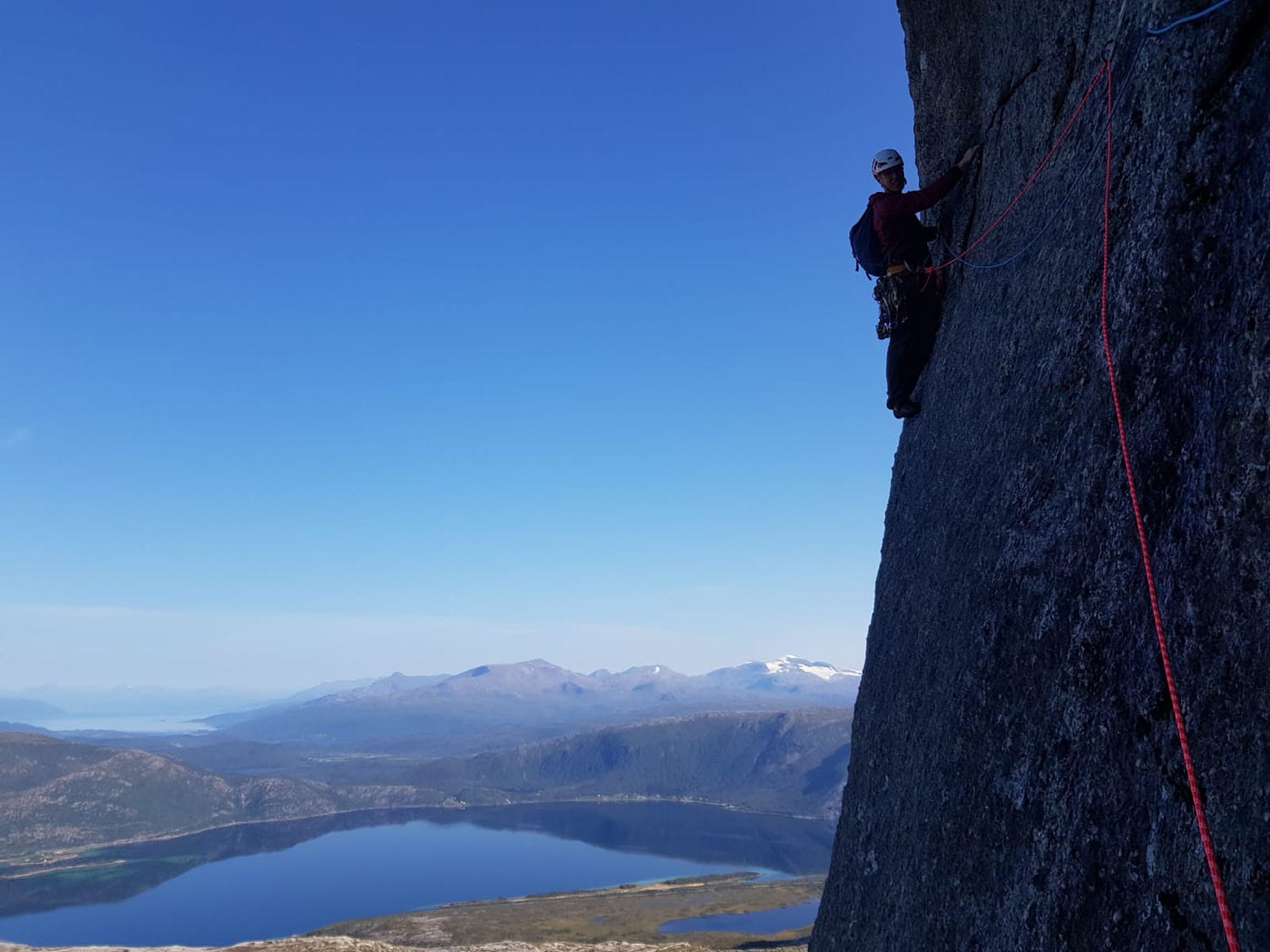

The Lofoten islands in Norway are famous for their beauty and good granite climbing above green grass slopes and the blue waves of the Atlantic ocean. After an expedition to the warm and dusty Pakistan earlier in the summer, I felt like I was in a paradise when I arrived to the Lofoten islands in early August.
In 2020, I had spotted a cool looking face from a satellite image, located on the island of Moskenesøya in the far west corner of Lofoten. It seemed very remote and hard to reach due to the steep sea cliffs guarding the approach on both sides of the shore. The picture showed a magnificent spur splitting the slabby face in half. It begged to be climbed.
I teamed up with Misha Mishin, a Russian climber who lives in Finland but who was working on Lofoten and was free for a weekend of climbing.
We drove to Reine and took a boat to Vindstad to where we were supposed to start hiking to the face. It was very rainy and we decided to sleep in a waiting room at the Vinstad harbour, instead of in our tents.
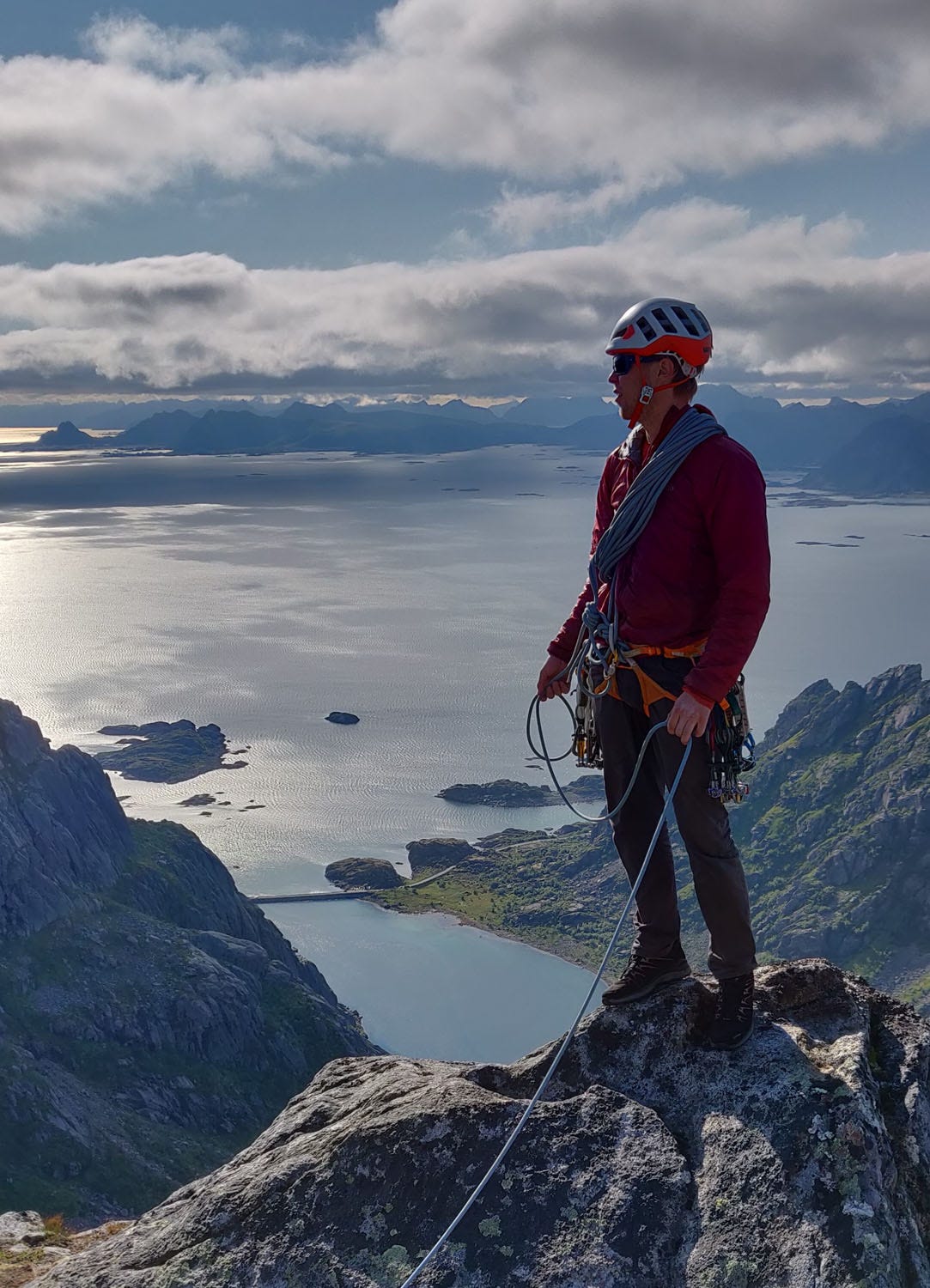



The following morning we followed a faint trail over a mountain pass to the Hermannsdal valley to reach the west coast of Moskenesøya. Then we followed the shoreline up north for 1km, climbing over sea water canyons and steep grass slopes. By sheer luck it was doable. And far less tiring than we’d imagined.
The West face of Storskiva looked quite intimidating from the shore. It had been raining two days straight, but our planned pillar looked dry.
To get to the spur proper we needed to climb four pitches on broken slabs heading slightly left. Not technically difficult, but the slabs were very compact and the protection was poor.
It was noon when we started up the main spur.
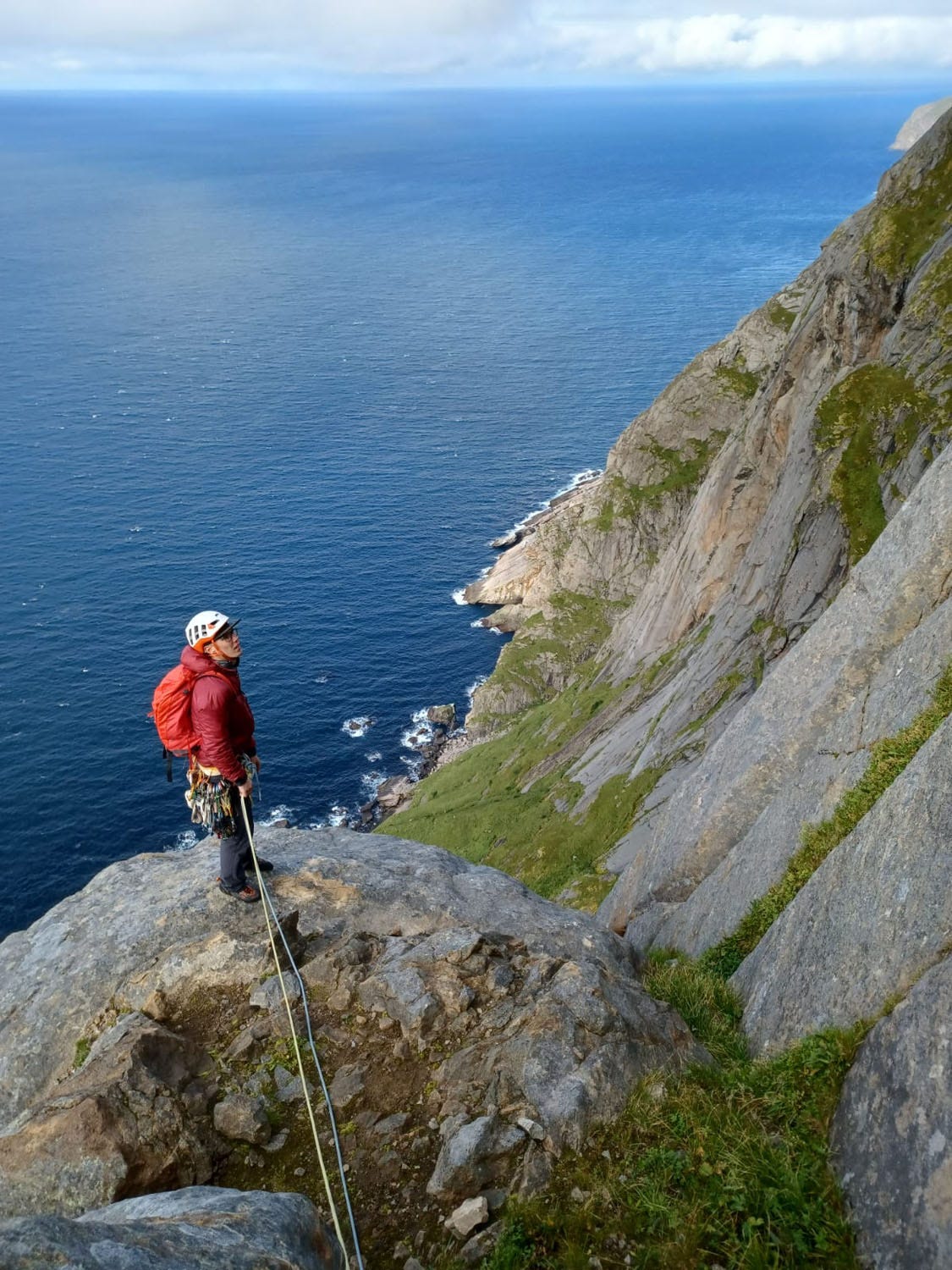

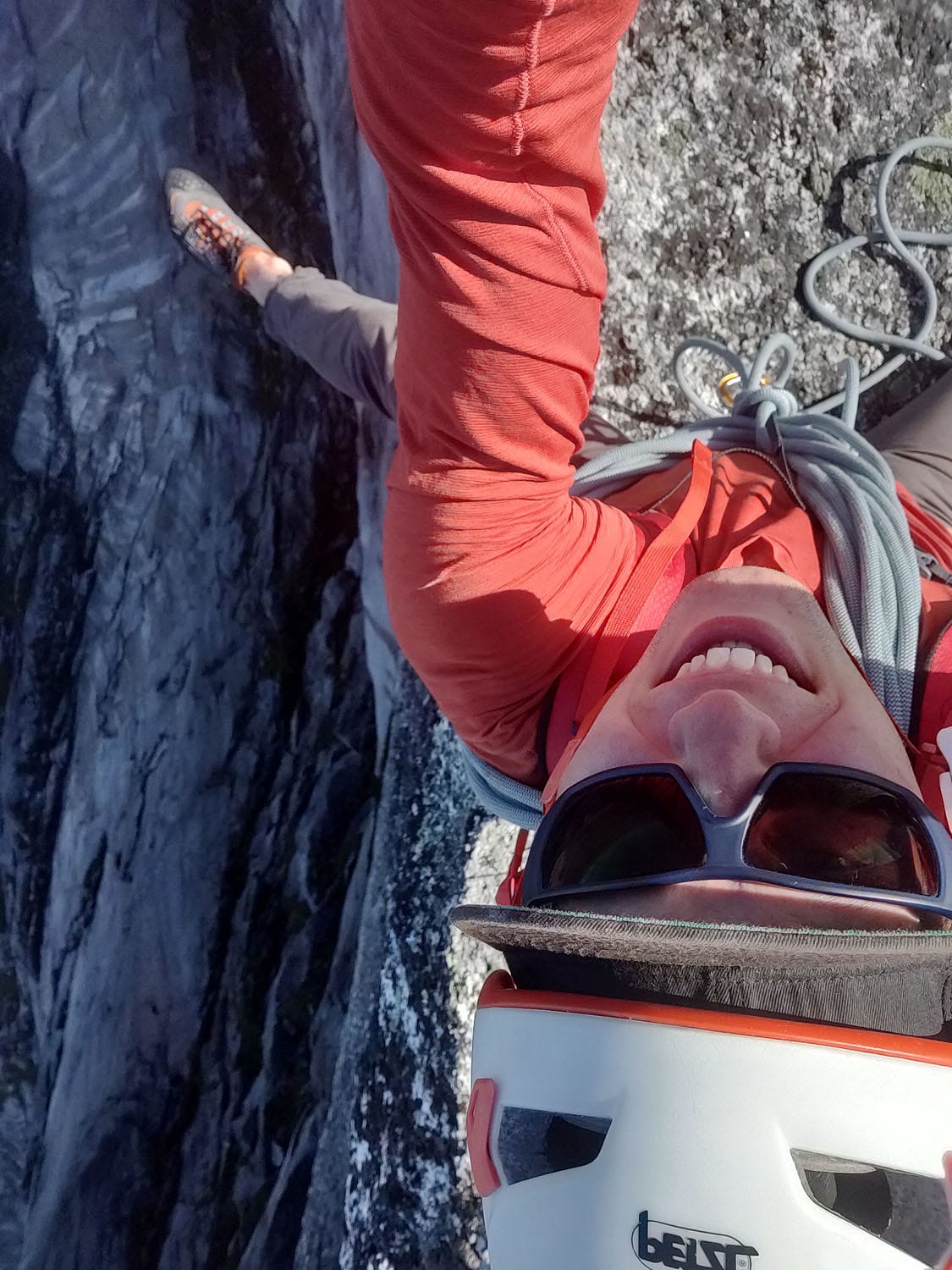

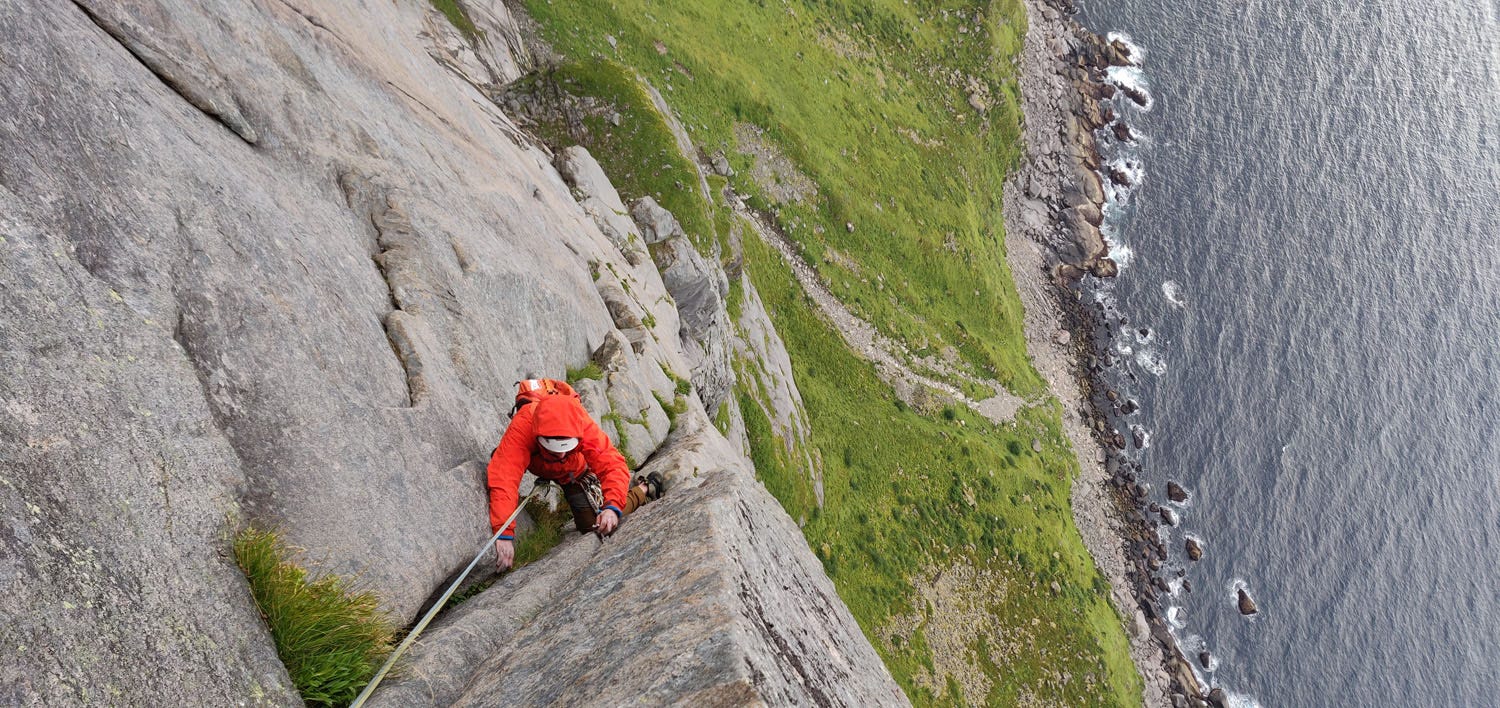

The next eleven pitches provided some hugely varied climbing. The rock was some of the best I have seen, but there was grass in all the cracks, which made climbing very bold and slow. On some pitches we needed to dig out every gear placement and on some, we were hand jamming and pinching tufts of grass or scratching mud pockets to stay on the wall. Our nut tools were our best friends.
Here and there we encountered some faster free climbing pitches, but the going was mainly slow, changing from easy aid to bold slabs. Often, we needed to lower the leader down to pick up more gear in order to be able to complete pitches just 30m high.
Having said that, we were also very lucky that the crack system ran straight up and that we didn't have to do any big traverses. It would be a three-star free climb without all the moss in the cracks.
At 23:00, we reached a big grass ledge and thought the climbing would be over. But we still needed to do one exit pitch to reach easier terrain. Once again, we were lucky that we got through the rock barrier on our first try as it was already pitch black and we had no clue which crack would lead us upwards.
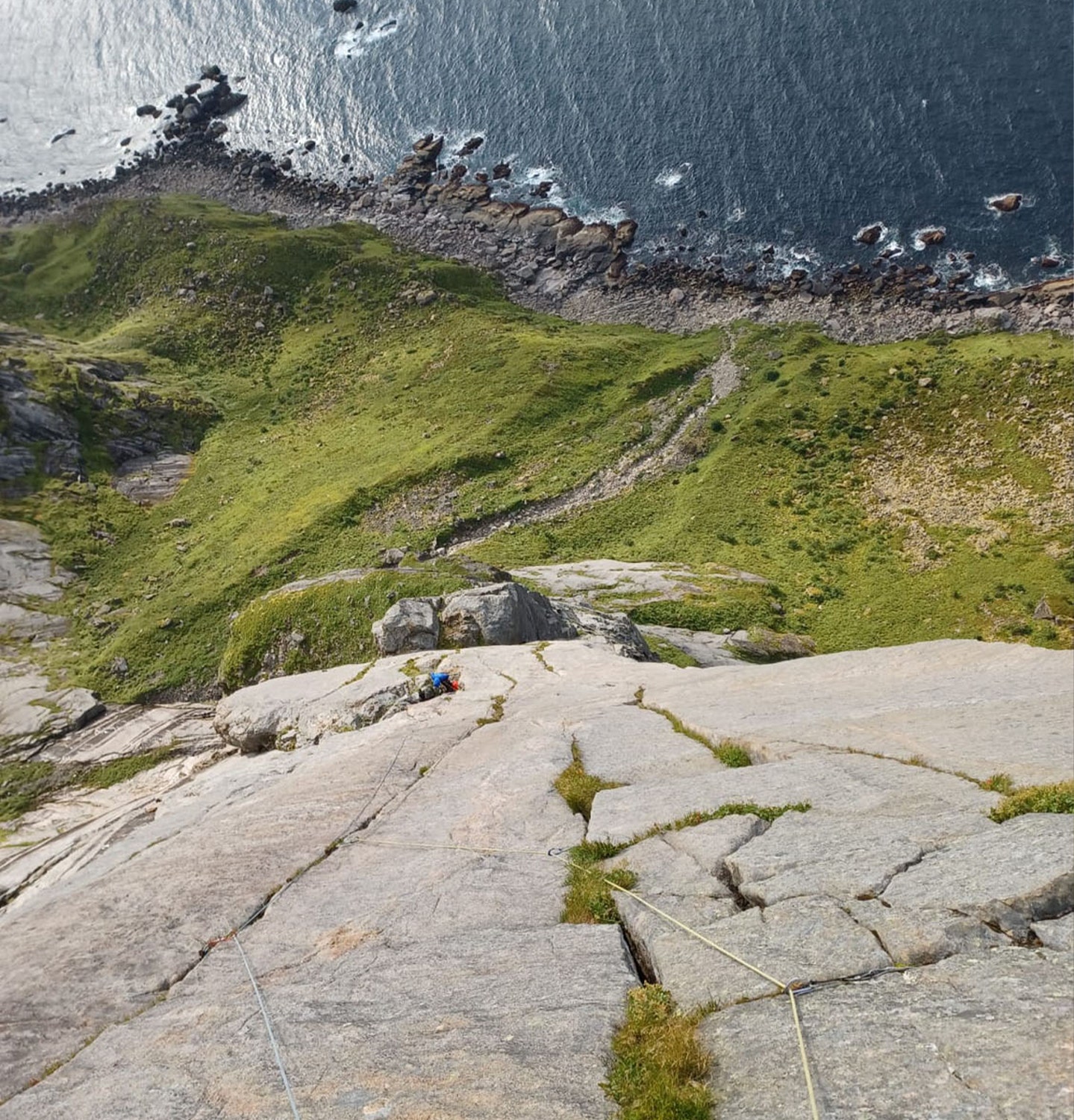

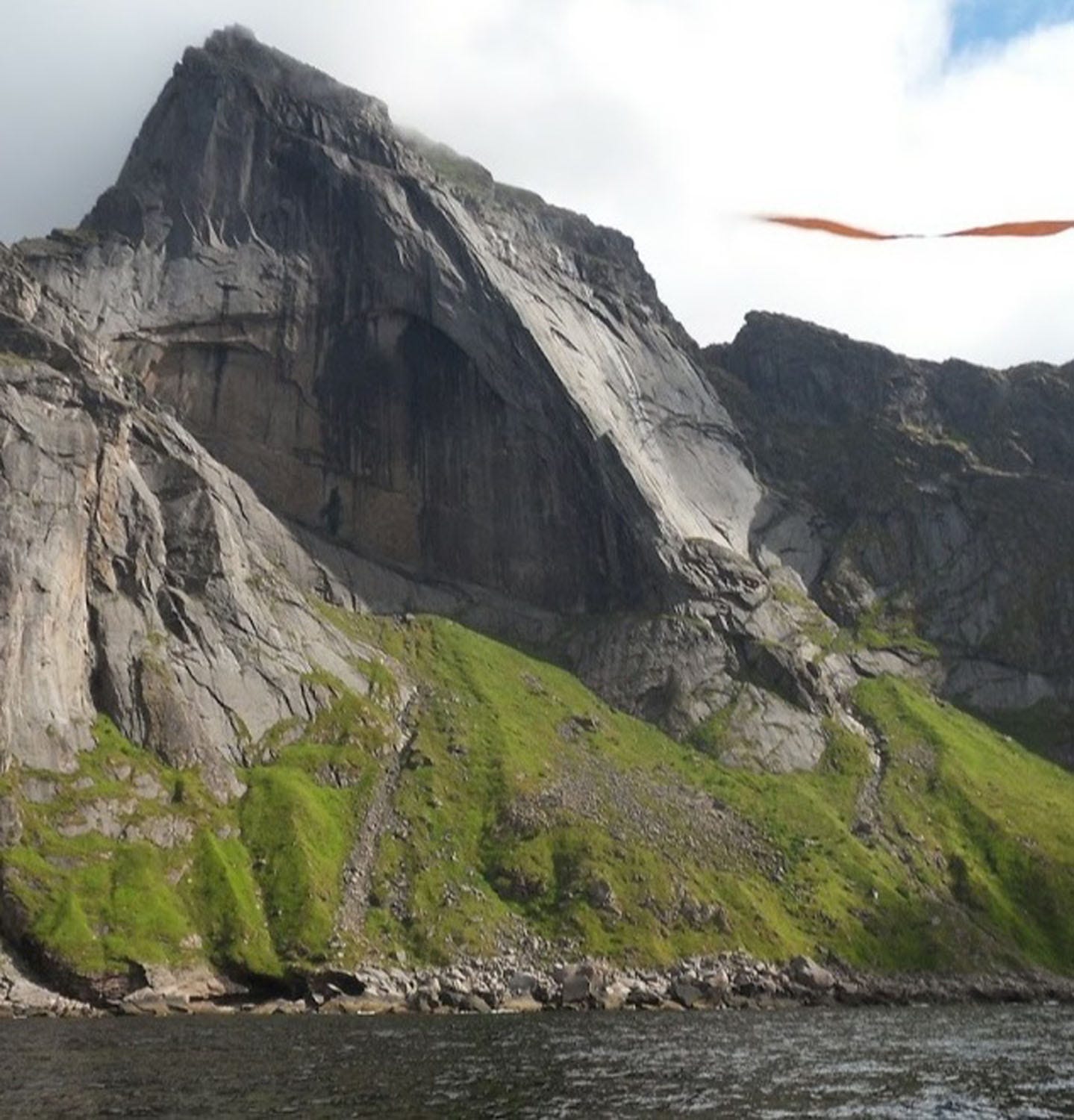

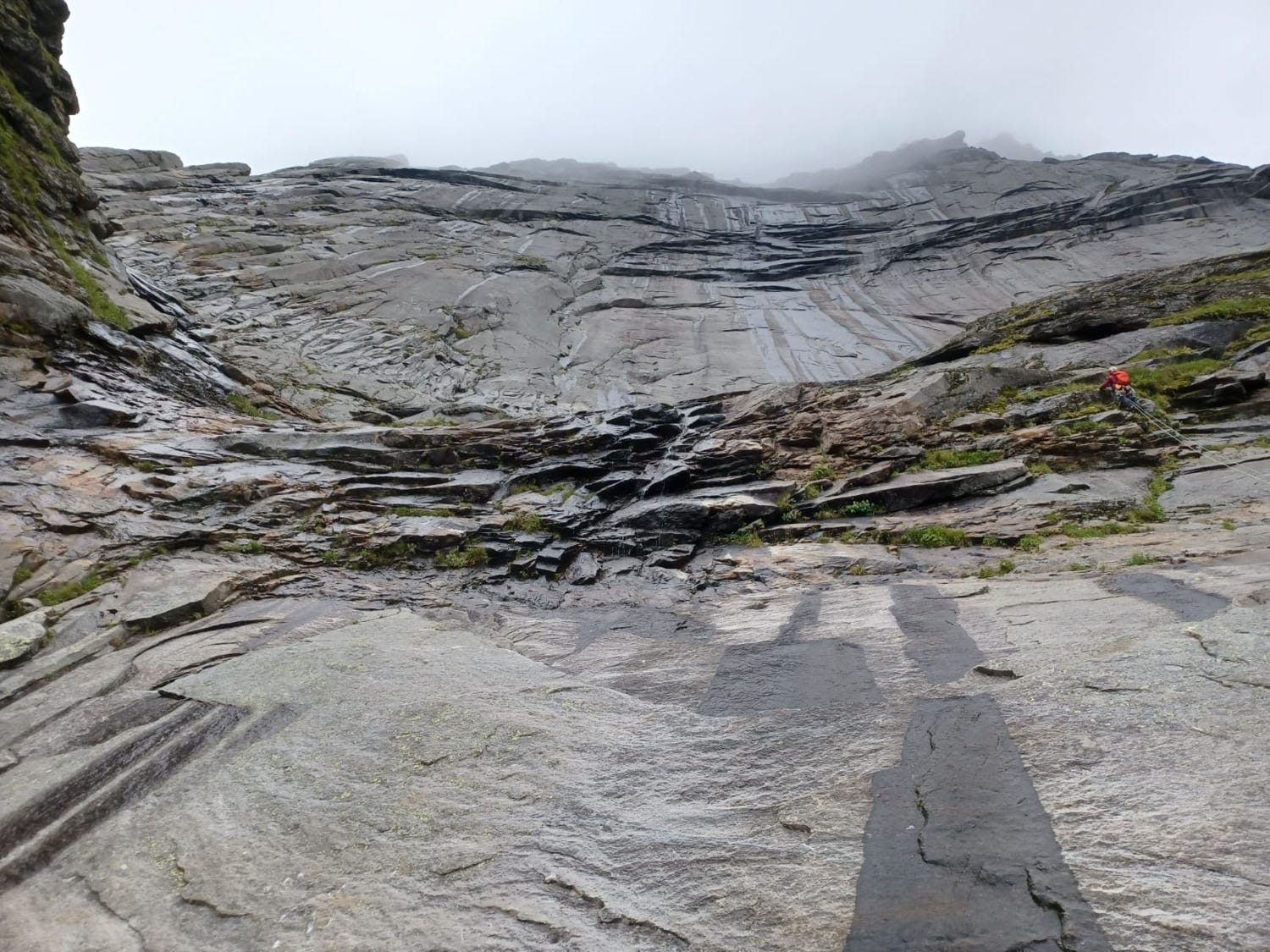

After midnight we completed the remaining walk to the top of Storskiva and started descending straight away. It was misty and finding a way down with GPS was the only option.
We reached the harbour at Vinstad at 4am on Sunday, after 22 hours on the go, and crashed out on the floor in the waiting room, only to be woken up by Swiss hikers few hours later.
We named the route Ørneeggen and encountered difficulties up to N7 and C1 in 15 pitches of climbing. No gear was left behind.
The first ascent of the west face was truly an adventure, but I also had some other good days on the Norwegian mountains. Endless scrambling on the classic "Ersfjordtraversen" or very exposed and steep climbing on "Nordvestpassasjen" on the north face of Kuglhorn. The call of the north is getting stronger!
A dedicated climber, Juho has mastered almost all disciplines of climbing. He’s made impressive ascents of the north faces of the Eiger, Matterhorn, and the Grand Jorasses, while also putting up new routes in Finland.
Read more about Juho here

